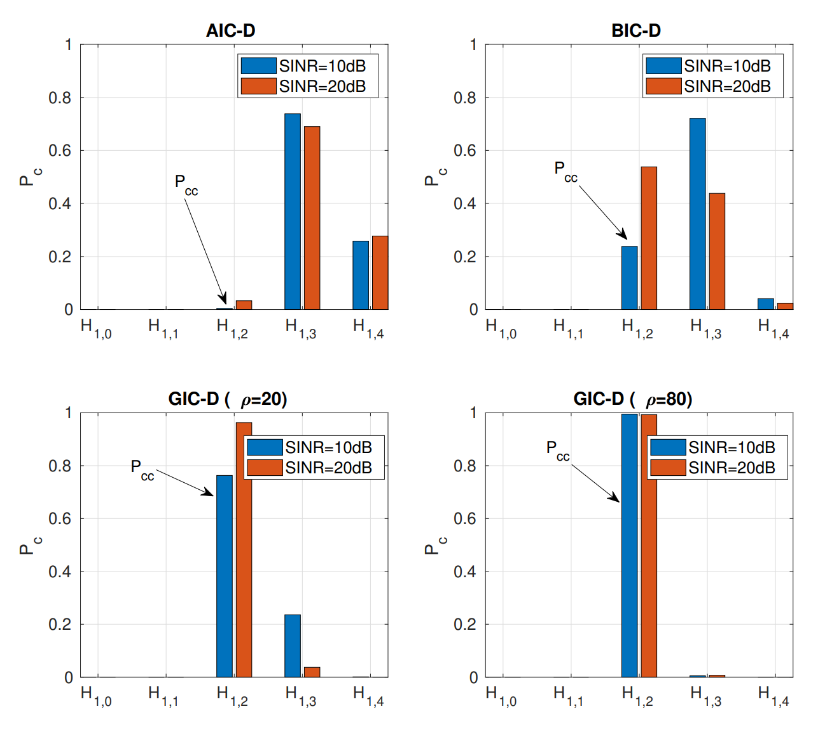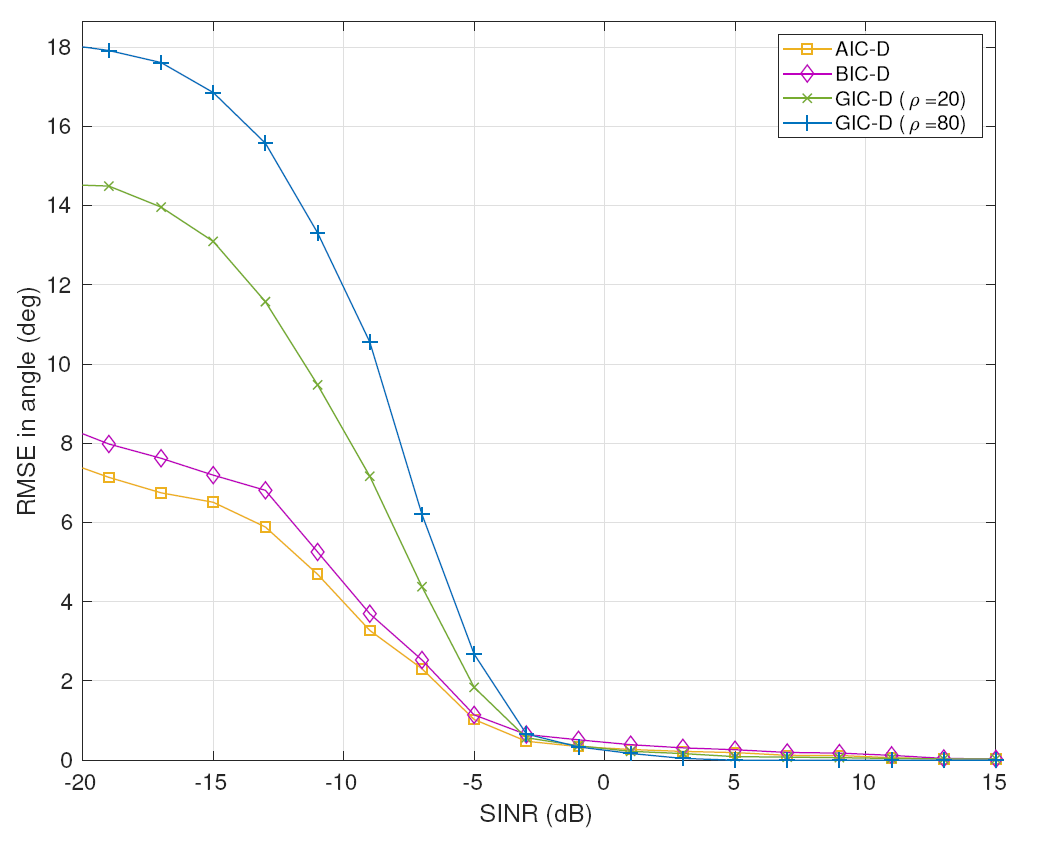In recent year, the improvements in digital signal processing technique have been exploited by an effective class of electronic countermeasures referred to as smart jammers. They are capable of generating multiple interference signals that are coherent with the desired signal, to destroy the target detection and high-resolution direction of arrival estimation capability of adaptive array system. Consequently, they lead to a significant performance degradation for sonar system. In order to mitigate this deleterious effect, adaptive detection algorithm for multiple coherent signals is an urgent need.
To meet this demand, researchers from the Institute of Acoustics of the Chinese Academy of Sciences (IACAS) together with peers in China and Italy, formulated the detection problem for multiple coherent signals as a multiple hypothesis test. By combining Model Order Selection (MOS) rules, they devised three novel adaptive detection and classification methods, called AIC-D (Akaike Information Criterion-based Detector), BIC-D (Bayesian Information Criterion-based Detector) and GIC-D (Generalized Information Criterion-based Detector), respectively. These methods could not only detect the coherent interference signals effectively, but also provide estimates for the angles of arrival (AOA) of the signals as well as for the number of signals.
Digital simulation results show that the proposed architectures can provide a higher detection probability in comparison with conventional Generalized Adaptive Subspace Detector (GASD) and Generalized Adaptive Matched Filter (GAMF). The results also show that GIC-D has satisfactory ability for estimating the number of coherent signals, while the estimation accuracy of AOA increases significantly with the increase of SINR (Signal to Interference plus Noise Ratio).

Figure 1. Probability of detection () versus SINR for three proposed novel methods, under one coherent signal scenario (left subplot) and two coherent signal scenario (right subplot). (Image by IACAS)

Figure 2. Classification probabilities histogram for three proposed novel methods under two coherent signal scenario. (Image by IACAS)

Figure 3. The root mean square errors (RMSE) in angle versus SINR for three proposed novel methods under one coherent signal scenario. (Image by IACAS)
Future research tracks may include the design of space-time processing architectures that account for coherent signals spread along the range dimension or aimed at operating in scenarios where multiple coherent and/or uncorrelated signals are present.
The research, published in the international journal IEEE Transactions on Signal Processing, was supported by the National Natural Science Foundation of China (Nos. 61971412, 61701490).
Reference:
HAN Sudan, YAN Linjie, ZHANG Yuxuan, Pia Addabbo, HAO Chengpeng, Danilo Orlando, Adaptive Radar Detection and Classification Algorithms for Multiple Coherent Signals, IEEE Transactions on Signal Processing, 2020, PP(99):1-1, DOI: 10.1109/TSP.2020.3047523
Contact:
ZHOU Wenjia
Institute of Acoustics, Chinese Academy of Sciences, 100190 Beijing, China
E-mail: media@mail.ioa.ac.cn


